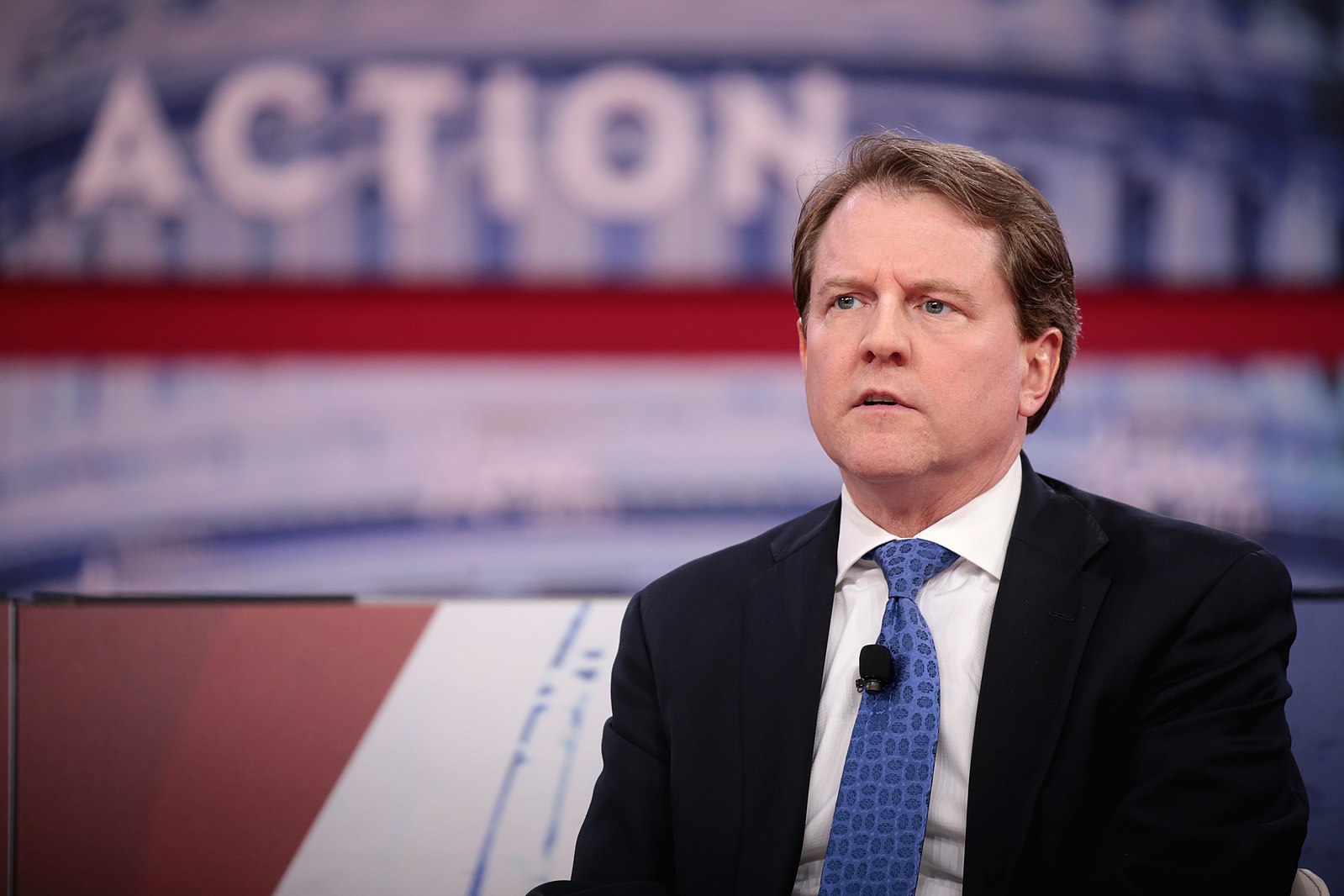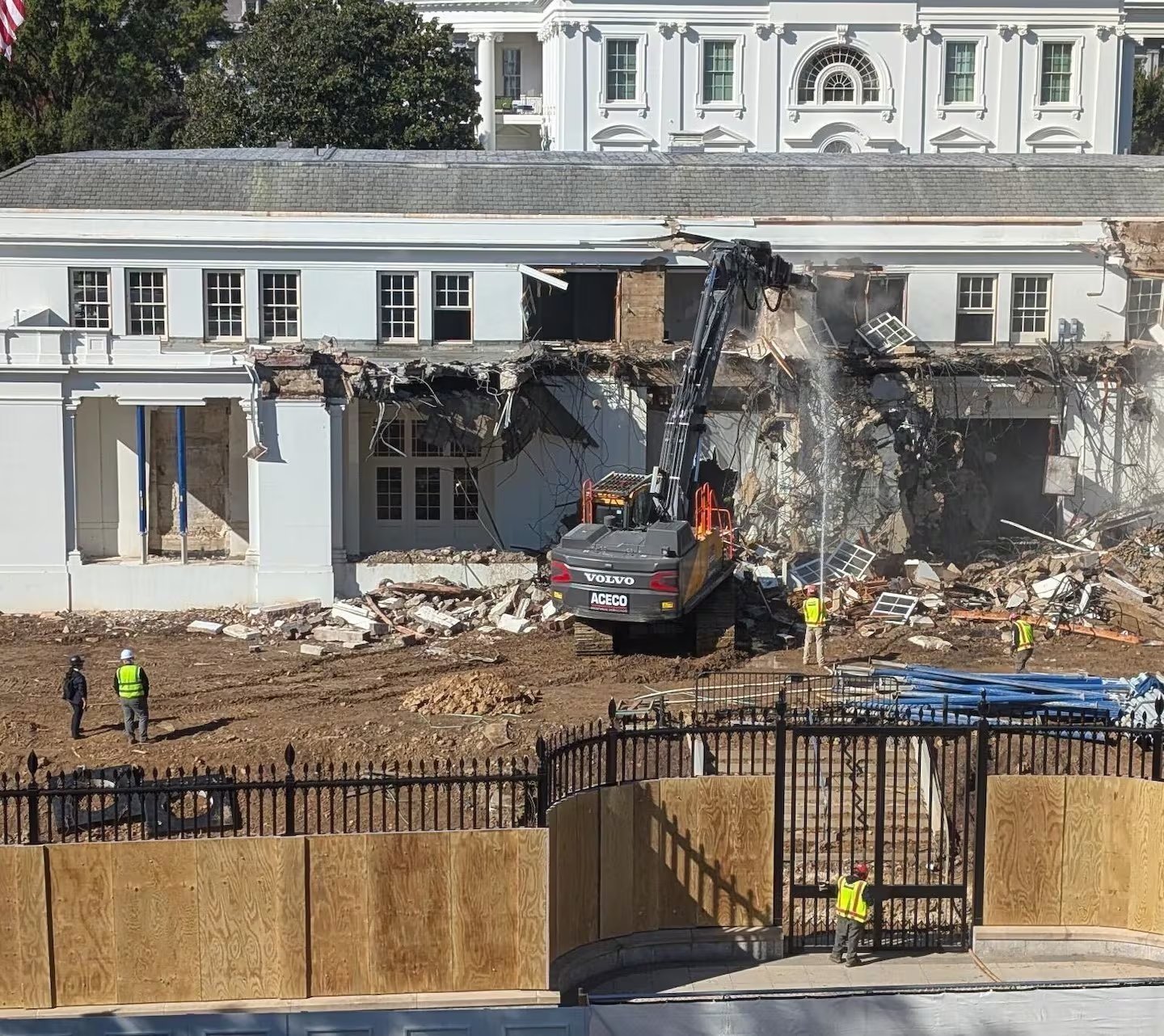The D.C. Circuit Got History Wrong in its McGahn Decision
The majority fails to consider the relevant history of congressional oversight of the executive branch.

Published by The Lawfare Institute
in Cooperation With

On April 22, 2019, the House Judiciary Committee issued a subpoena to former White House Counsel Don McGahn, requiring him to produce documents and to testify at a public hearing about 36 topics related to then-Special Counsel Robert Mueller’s Russia investigation. McGahn refused to comply with the subpoena, claiming absolute immunity from testifying before Congress. Almost a year and a half later, after congressional contempt proceedings, multiple judicial hearings and four important judicial opinions, the House remains no closer to enforcing that subpoena. On Aug. 31, his last day in office, Judge Thomas Griffith, joined by Judge Karen Henderson, issued a majority opinion holding that the House’s lawsuit should be dismissed. Griffith reasoned that Congress has not authorized the House to file suit in federal court to enforce congressional subpoenas. The third member of the panel, Judge Judith Rogers, dissented from the majority’s decision, arguing that the Constitution itself and the Declaratory Judgement Act authorize the House to file such a suit.
One could be excused for having deja vu, particularly if you are not familiar with the various justiciability doctrines that bar federal courts from hearing particular lawsuits. In February, the same split panel, with Griffith and Henderson in the majority and Rogers in dissent, ruled that the House’s lawsuit had to be dismissed because the Constitution did not give federal courts jurisdiction to hear such suits. The full D.C. Circuit, sitting en banc, vacated Griffith’s February opinion, however, and, ultimately, reversed it. In an opinion by Rogers, the full D.C. Circuit voted 7-2 to allow the suit to proceed. (Judges Gregory Katsas and Neomi Rao, both appointed by Trump, recused themselves from the case.) Rogers’s opinion for the full court repeatedly emphasized the importance of the House’s ability to enforce its subpoenas in court. As she wrote, “[P]ermitting Congress to bring this lawsuit preserves the power of subpoena that the House of Representatives is already understood to possess.” In the full court’s view, it was not judicial enforcement of congressional subpoenas but “McGahn’s challenge to the Committee’s standing that s[ought] to alter the status quo ante and aggrandize the power of the Executive Branch at the expense of Congress.” Rogers continued: “Without the possibility of enforcement of a subpoena issued by a House of Congress, the Executive Branch faces little incentive to reach a negotiated agreement in an informational dispute. Indeed, the threat of a subpoena enforcement lawsuit may be an essential tool in keeping the Executive Branch at the negotiating table.”
Griffith’s most recent opinion stands in direct contrast to the full court’s recognition that the possibility of judicial enforcement is a necessary part of congressional oversight authority. In the opinion released Monday, he and Henderson (again) rejected the possibility that the House could sue to enforce its subpoenas. But they did so under a separate doctrine this time. The full D.C. Circuit had concluded that the Constitution allowed the federal courts to hear suits brought by a house of Congress seeking to enforce its subpoenas. Griffith concluded, however, that Congress had not authorized such suits. In other words, even though the Constitution allows it to do so, Congress had not provided the House with a cause of action to enforce its subpoenas in the federal courts.
There is much to say about the legal reasoning in Griffith’s opinion. For example, he relies on two Watergate-era statutes that provide the Senate a cause of action to enforce its subpoenas in order to conclude that “Congress has declined to authorize lawsuits like the [House’s] twice over.” He thus accepts the government’s argument that the existence of a statutory cause of action for the Senate implies Congress did not want to authorize the House to sue. But that argument has been persuasively rejected by two well-respected district court judges (one an appointee of George W. Bush and the other an appointee of Barack Obama). As those judges recognized, the statutes on which Griffith relies dealt with a separate problem, and one of them expressly does not apply to instances in which governmental privileges are asserted, even for the enforcement of a Senate subpoena. Indeed, both district court judges noted that the report accompanying the enactment of one of the relevant statutes stated explicitly that it was “not intended to be a congressional finding that the federal courts do not now have the authority to hear a civil action to enforce a subp[o]ena against an officer or employee of the federal government.” Griffith’s opinion found to the contrary without addressing the relevant history of the statutes or the counterarguments that led previous judges to reject the government’s argument.
More troubling, however, is Griffith’s somewhat cursory dismissal of the role of courts in these interbranch disputes. He asserts that courts have no inherent equitable power to remedy a constitutional violation against the House. In his view, the “debate concerning [the] formidable power to compel executive-branch officials to respond to congressional subpoenas should be conducted and resolved where such issues belong in our democracy: in the Congress” (internal quotation marks omitted). Because there is no historical “tradition” of courts issuing an injunction “against a former Executive Branch official in an interbranch information dispute,” Griffith concludes that courts may not issue such equitable relief in this instance. He also notes that “time and again, the Supreme Court has warned federal courts to hesitate before finding implied causes of action,” and claims to be abiding by that warning in this case.
The issues presented in this case are thorny ones, as any law student taking a class on federal courts knows. Griffith’s opinion, however, has a fundamental flaw that any astute observer can recognize. In claiming the mantle of history and tradition, he fails to consider the relevant history of congressional oversight of the executive branch. He finds support in the absence of any past examples of a court issuing an injunction to a former executive branch official to provide information. But he never addresses the fact that an executive branch official could not have claimed absolute immunity and refused to comply with a congressional subpoena until the executive branch created that doctrine in the 1970s. A former official could not have relied on that doctrine until more recently, in 2007. Moreover, Griffith cites the House’s traditional power of inherent contempt, which it has not utilized in almost 100 years. He does not acknowledge, however, that the executive branch concluded that “Congress could not lawfully exercise any inherent contempt authority against [McGahn] for asserting immunity” and that the executive branch could not prosecute him for criminal contempt of Congress. In other words, in grounding his opinion in history, Griffith leaves out any discussion of the relevant history of interbranch relations and focuses solely on what the courts have done historically, turning a blind eye to developments in congressional oversight and accelerating executive branch intransigence.
As I explain in an article forthcoming in the Duke Law Journal, in recent decades the practice of congressional oversight and the executive branch’s understanding of its constitutional authority in response to oversight has changed dramatically from historical practice. The primary driver of that change is the executive branch’s development of a comprehensive constitutional doctrine of executive privilege that has rendered Congress virtually impotent to enforce its subpoenas. In the executive branch’s current view, developed by administrations of both parties over the past 40 years, the president has the absolute authority to control all information that may potentially be privileged. And that power includes the authority to direct current and former officials and employees not to provide information to Congress. The doctrine of executive privilege has a long history, some claiming it dates all the way back to the administration of George Washington. But the conceit underlying Griffith’s opinion that the current dispute between McGahn and the committee is of the same nature as those historical disputes is simply false. Historically, these types of cases—where the executive branch claims the constitutional authority to negate Congress’s oversight authority entirely—did not exist. Accordingly, the contention that there is no historical tradition of judicial involvement in this type of case has no relevance.
Griffith’s opinion buttresses its conclusion by pointing to the Supreme Court’s “caution” against implied causes of action. But, again, he omits the most relevant inquiry. The Supreme Court has refused to infer a cause of action in statutes that do not include one, in cases Griffith cites such as Comcast Corp. v. National Association of African American-Owned Media and Alexander v. Sandoval. And it has refused to infer a cause of action in tort cases involving damages suits against government officials in other cases Griffith cites, such as Hernandez v. Mesa and Ziglar v. Abbasi. But the Supreme Court has repeatedly decided cases alleging a constitutional violation and seeking equitable relief to remedy that alleged constitutional violation, even where Congress has not created a statutory cause of action. As John Preis has written, “[F]ederal courts having jurisdiction over a dispute have, from the Founding, enjoyed the power to create injunctive actions without explicit authorization from Congress.”
The fact that the court has refused to infer a cause of action for damages in the cases cited by Griffith is thus largely immaterial. Indeed, in the Mazars case decided less than two months ago, the Supreme Court heard the merits of a case brought by Trump in his personal capacity seeking to quash subpoenas for his financial records issued by two House committees. The complaint never states a statutory cause of action, instead relying solely on the existence of constitutional claims. Yet the Supreme Court never questioned whether a cause of action existed in Mazars—nor did any party. Even after the Supreme Court requested the parties to brief “whether the political question doctrine or related justiciability principles bear on the Court’s adjudication of these cases” (emphasis added), the government never argued that the court could not infer a constitutional cause of action, and no one else raised the issue either. Even though the government had raised the question of whether the House had a cause of action in the McGahn case that was proceeding at the same time, all parties in Mazars, including the government, appeared to accept that if the plaintiffs alleged a constitutional violation and sought only equitable relief, the court could remedy that violation.
The parties’ and the court’s implicit acceptance of a cause of action in Mazars fits with historical practice, as Preis details. The court has repeatedly exercised its equitable authority to redress constitutional violations without requiring there to be a specific statute authorizing the suit. The court’s landmark decisions in Brown v. Board of Education and Cooper v. Aaron that held segregated schools violated the Equal Protection Clause and that state officials had to abide by the Supreme Court’s decision and end segregation were both cases involving implied equitable causes of action. And in the famous case of Powell v. McCormack, the Supreme Court granted the equitable relief requested by Powell, who had been prevented from taking the congressional seat to which he had been elected, because his exclusion violated the Constitution, never inquiring whether Congress had expressly authorized such officials to sue. More recently, in the 2010 case Free Enterprise Fund v. Public Company Accounting Oversight Board, the Supreme Court rejected the government’s argument that the plaintiff lacked “an implied private right of action directly under the Constitution.” Instead, the court noted that “equitable relief has long been recognized as the proper means for preventing entities from acting unconstitutionally.” Moreover, although a statute—42 U.S.C. § 1983—expressly creates a cause of action only against state officials for constitutional violations, the court has allowed suits seeking equitable relief against federal officials to proceed as well under the doctrine of Ex parte Young. Justice Antonin Scalia himself, who authored the majority opinion in Alexander on which Griffith relied, wrote in 2015 that “[t]he ability to sue to enjoin unconstitutional actions by state and federal officers is the creation of courts of equity, and reflects a long history of judicial review of illegal executive action, tracing back to England.”
Historical practice thus favors the courts’ authority to hear a constitutional claim for equitable relief. Griffith’s majority opinion, without discussing that history, decided it did not apply to the House.
The court could have achieved the same result through different means, of course. Both historical traditions of equity and the Declaratory Judgment Act, on which the House relied in suing McGahn, permit courts discretion to refuse to exercise jurisdiction or provide a remedy even if a cause of action exists and jurisdiction is proper. The majority could have decided that judicial intervention was not appropriate as a matter of discretion in this particular case. Instead, the court chose to ground the decision in another absolute. They held that the House can never sue to enforce its subpoenas until Congress passes and the president signs a statute that expressly says the House can sue the executive branch (or two-thirds of Congress enact such a statute over a presidential veto). To say the prospects for such a statute are dim would be quite an understatement. Given the executive branch’s long-standing view—rejected by the full D.C. Circuit but still unresolved by the Supreme Court—that the Constitution does not even allow the courts to hear such suits, it’s hard to see how any president would sign that law. And the idea that two-thirds of Congress could agree on anything—let alone something that has as many political ramifications as oversight authority—are minuscule in today’s two-party system. Griffith’s opinion would thus, as a practical matter, almost certainly end the House’s ability to sue to enforce its subpoenas, both against the executive branch and against any private party. His opinion does not address the Senate, of course. But his reasoning suggests the Senate would also be barred from suing executive branch officials because one of the statutes creating jurisdiction and a cause of action for the Senate also specifically excludes cases involving assertions of governmental privileges.
Josh Chafetz, perhaps the preeminent authority on Congress’s constitutional authority, has argued that rulings such as Griffith’s two opinions in the McGahn case may be a good thing for congressional oversight. As he wrote after the initial panel decision, “The Judiciary Committee was never going to get what it really wanted through the courts, and having that avenue foreclosed might force Congress to reinvigorate tools that might work.” Chafetz is right, I think, in his skepticism about the ability of courts to resolve these information disputes. As I have written, the judicial process simply takes too long and has too many mechanisms for delay to be an effective way for Congress to enforce its oversight demands. In any individual dispute, judicial recourse is neither advisable nor likely to produce a resolution.
The fact that judicial enforcement is ineffective and unlikely to resolve any single dispute is only part of the equation, however. Unlike Chafetz, I think judicial intervention is necessary to provide some clarity about the fundamental constitutional dispute between the branches. Over at least the past three decades, the executive branch and Congress have been locked in an escalating constitutional dispute about their respective authority in the context of oversight. That dispute came to full light during the impeachment proceedings against Trump, and the confrontation shows no signs of abating. House committees have recently made the news by indicating they will hold Secretary of State Mike Pompeo in contempt for refusing to provide documents and will subpoena the U.S. postmaster general for his refusal to turn over documents. Whether Trump or Biden wins the upcoming election, one can imagine continued aggressive oversight so long as the opposite party retains control of one house of Congress.
Chafetz asserts that “judicial resolution of these questions is simply not suited to political time frames” and that the elimination of judicial enforcement will force Congress to again rely on some of its institutional powers, such as utilizing inherent contempt or wielding its authority to appropriate money. Perhaps. Supporting his hypothesis, several House Democrats have proposed amending the House rules to revive inherent contempt, including the levying of a $25,000 fine for noncompliance. As I have explained, however, I am skeptical that Congress can combat the executive branch’s claimed constitutional authority using any of these existing authorities. The executive branch has already indicated it will not comply, and I am not sure how Congress could in practice enforce a fine or effect an arrest without acquiescence by executive branch officials. As counsel for the House pointed out in the initial oral argument in the McGahn case, the prospect of a “gun battle” between the House’s sergeant-at-arms and the attorney general’s FBI security detail is somewhat absurd. If Congress did find a way to enforce its inherent contempt, despite the executive branch’s opposition, a federal court would almost certainly hear a case in which an individual who had been fined $25,000 by Congress claimed a constitutional injury. But why must federal courts wait for that possible case to address the constitutional dispute at issue? Moreover, Griffith’s view of the need for express statutory authorization to bring such a suit would likely preclude that suit as well, making the prospects for its future resolution no more promising.
Griffith’s search for a specific history of courts enforcing congressional subpoenas against the executive branch thus overlooks the larger history of the role of the courts in resolving constitutional disputes and neglects to consider the historical development of congressional oversight and executive privilege. It also casts aside the en banc court’s recognition of judicial review as an “essential tool” of congressional oversight and fails to heed the Supreme Court’s admonition that “[i]n general, the Judiciary has a responsibility to decide cases properly before it, even those it ‘would gladly avoid.’”
Griffith’s approach would significantly undermine any hope of resolving some of the contentious constitutional disputes that have largely incapcitated congressional oversight. In my view, the underlying constitutional dispute between the executive branch and Congress must be—and can only be—resolved by the courts. Like Chafetz, I do not believe the courts are the ideal, or even a functional, vehicle for resolving each specific disagreement over particular information or testimony or reviewing thousands of documents to determine what is privileged and what is not. But courts are the only neutral arbiter of constitutional principles in a clash between the executive branch and Congress. And fundamental principles of constitutional law governing the respective authorities of Congress and the executive branch will remain unresolved and unresolvable unless and until the judicial branch provides some answers and establishes some foundational principles. Moreover, as Bob Bauer has recognized, even the possibility of a judicial decision can help keep the executive branch in check by providing incentive to compromise rather than risk unfavorable precedent that would govern future actions.
The Trump administration has claimed that numerous officials and former officials such as McGahn are absolutely immune from congressional subpoenas seeking their testimony, expanding the concept of testimonial immunity that has been claimed, at least in some form, for at least 30 years. Almost certainly, the question of whether any such immunity exists under the Constitution will be resolved only if the federal courts address it. It is possible, of course, that enough of a popular consensus would develop in the country to reject the executive branch’s immunity doctrine, ultimately leading the political branches to follow that popular consensus. That seems highly unlikely, however. There are exceedingly few examples of the executive branch willfully ceding powers claimed by past administrations. And even if a future administration disavowed the vast scope of the immunity claimed by the Trump administration, it would not likely disclaim the doctrine entirely. Popular consensus rarely drives arcane constitutional principles, even if they have a moment in the headlines every so often. This is doubly true when that constitutional principle may prove extremely useful as a political tool.
A historical example contrary to Griffith’s approach demonstrates the vital role that courts can play. In the 1970s, President Ford asserted executive privilege over national security letters relating to wiretaps that a congressional committee had subpoenaed from AT&T. The executive branch filed suit, asking the court to enjoin AT&T from complying with the subpoena. In its initial opinion, the D.C. Circuit noted it was “faced with patently conflicting assertions of absolute authority” in the case and attempted to get the parties to negotiate a compromise. The executive branch claimed an absolute, unreviewable privilege over the national security information, and the House claimed that it was absolutely immune from the litigation under the Constitution’s Speech and Debate Clause. Both had reasonable arguments for their positions, and they entrenched into those doctrines despite the court’s admonition to try and reach a compromise. Although the D.C. Circuit had expressed hesitancy about addressing the dispute, ultimately, after negotiations failed, the court found it “necessary … to consider the conflicting claims of the parties to absolute authority.” As the court stated, “Both claims are put in absolute terms, to run without limit; and neither can be accepted as put.” By rejecting the absolute claims of each branch, the court cleared the way for what it called a “spirit of dynamic compromise.” The court did not have to resolve the particulars of that dispute to perform the crucial judicial role. Instead, it clarified the constitutional limits and principles upon which the negotiation could proceed. Griffith emphasizes the value of these negotiations but fails to recognize the necessity of first eliminating the constitutional absolutes that make common ground for negotiation impossible. The likelihood of “dynamic compromise” has grown remote today because the executive branch has consistently broadened its constitutional authority to resist oversight without any judicial intervention to curb that expansion.
I thought, briefly, that the Trump impeachment might finally bring some judicial insight into the competing constitutional doctrines of Congress and the executive branch. Impeachment presented a rare combination of acute congressional need for specific information and the need for expeditious judicial action. Had the House subpoenaed and pursued the testimony of officials such as John Bolton and Charles Kupperman, for example, the courts may have been forced to answer the undecided constitutional questions. But the House ultimately withdrew its demands to Kupperman and Bolton and decided not to pursue judicial enforcement of its subpoenas. The House now continues to litigate a number of enforcement actions in the courts, with McGahn being the furthest along. It appears likely, however, that these disputes will slowly dissipate, as many past disputes have, without any ultimate resolution of the intractably contested constitutional questions about executive privilege and congressional oversight authority. Eventually, however, one of these congressional suits—whether in this administration or a future one—will survive long enough be resolved by the Supreme Court or the D.C. Circuit and provide some guidance on the Constitution’s allocation of authority between the two branches. Under the majority’s decision, however, that will not happen. And the two branches will continue to anchor their disputes in absolutist positions of authority.
It is, of course, not sufficient to say the courts need to weigh in on a constitutional dispute to establish that they have the authority to do so. Established legal and constitutional doctrines governing the jurisdiction and authority of federal courts govern that determination. But both of Griffith’s opinions in the McGahn case repeatedly return to the idea that courts have historically played little role in resolving these disputes and rely on that absence of historical precedent to adopt a position limiting the courts’ role. History cannot be divorced from context, however. And the context of congressional oversight today is starkly different than it has been historically. The proper question is whether, given a specific constitutional dispute between the House of Representatives and a former official of the executive branch, the federal courts are authorized to answer the dispute and provide a remedy to the asserted constitutional injury. The full D.C. Circuit concluded that the House does, in fact, have a constitutional injury. Judge Griffith’s new opinion holds that the courts cannot remedy that constitutional injury unless Congress specifically tells them they have the authority to do so—something that would likely require supermajority votes in both chambers. But the courts have never applied that strict of a rule in past cases seeking nonmonetary remedies for constitutional wrongs. They should not apply that rule in this case.





